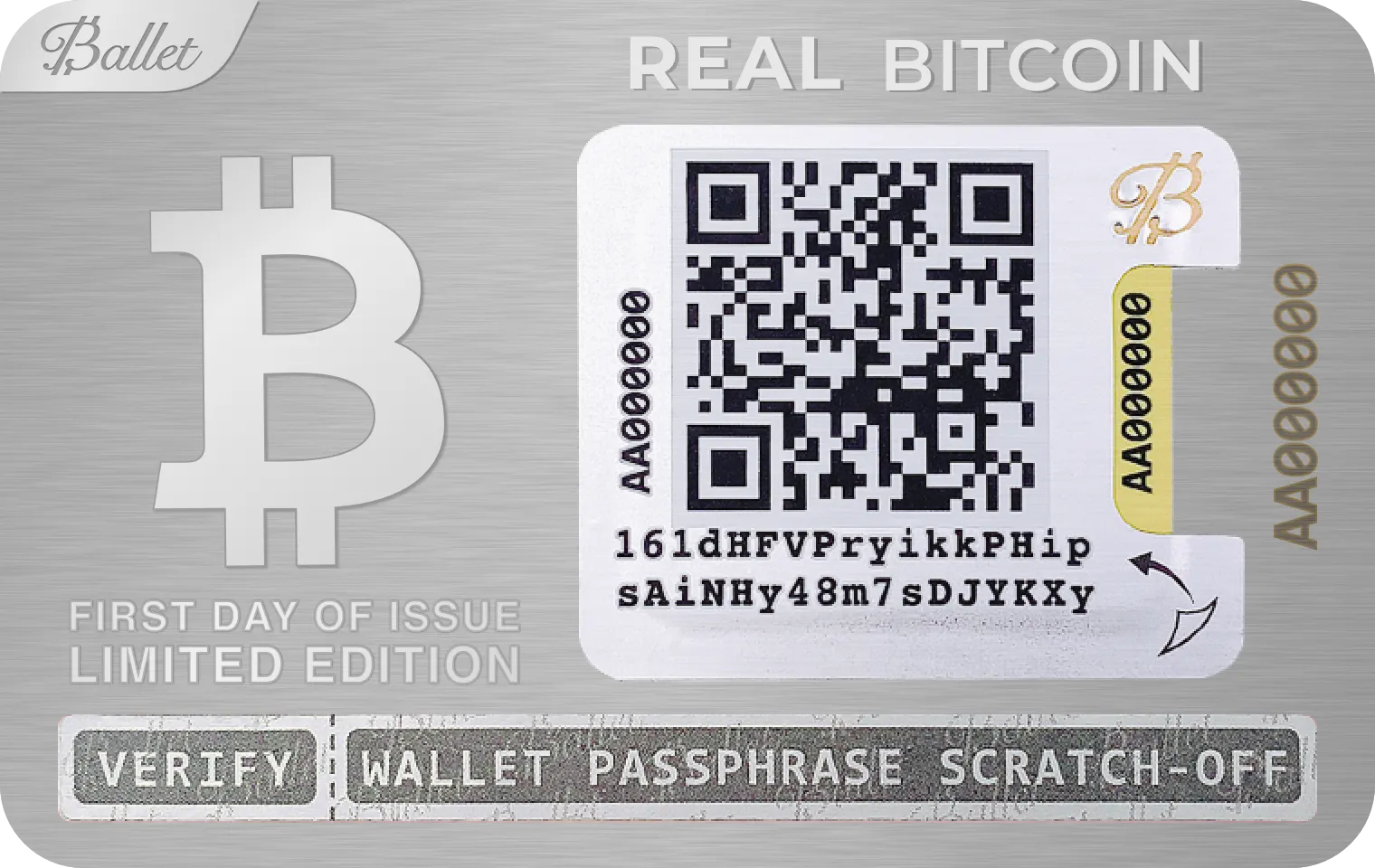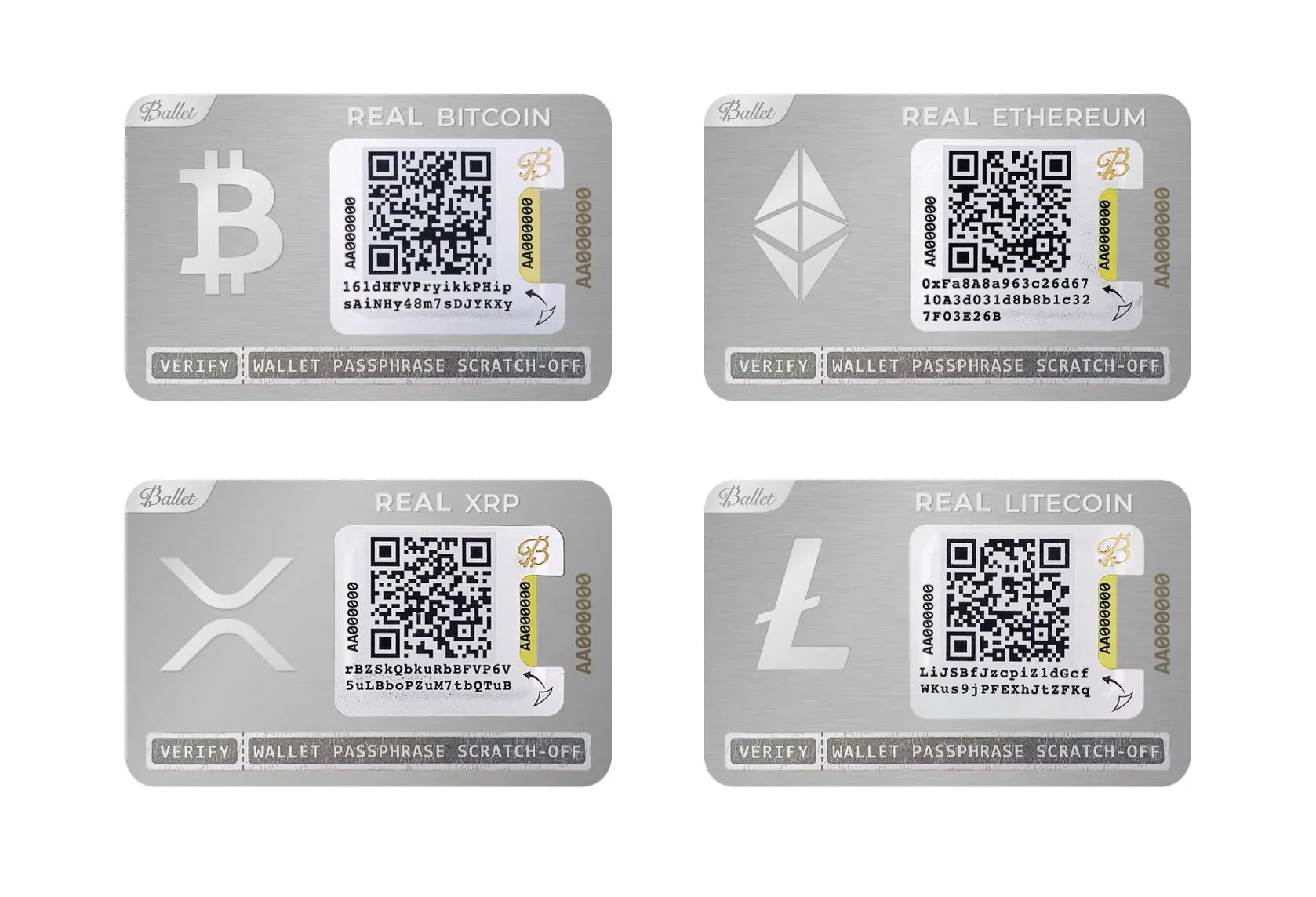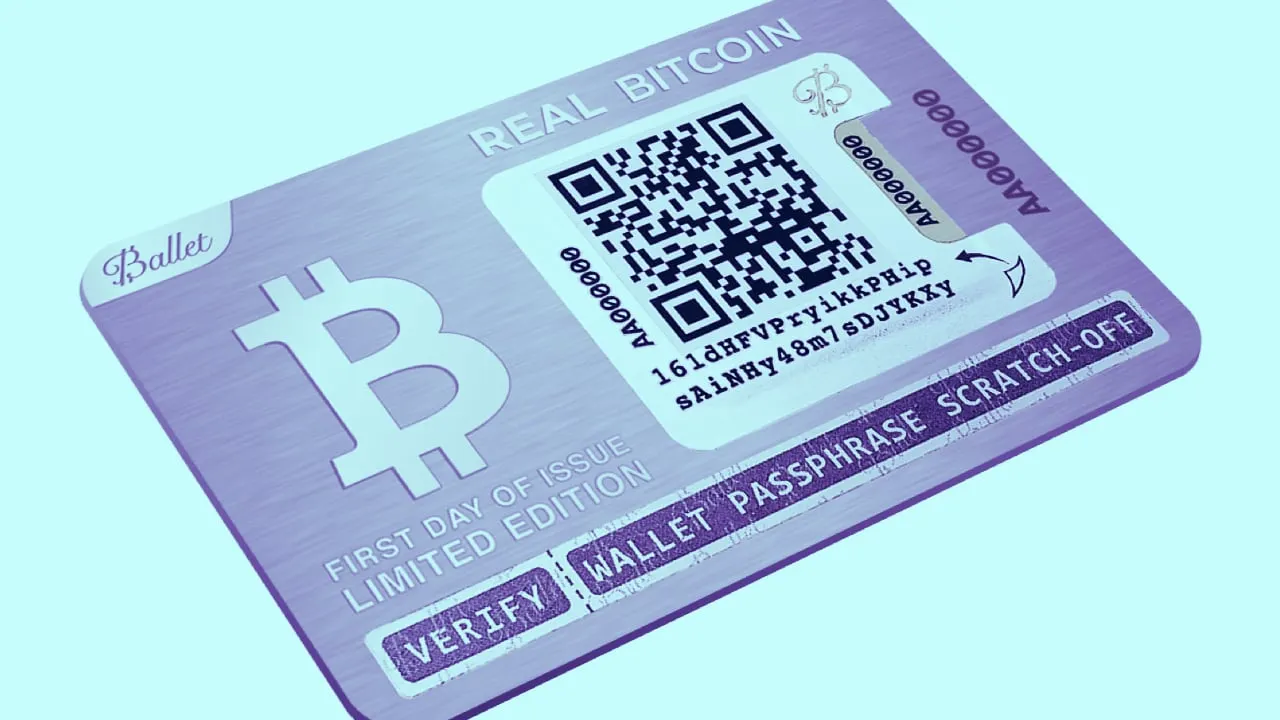Last week, I asked Bobby Lee, creator of Ballet, if his new $35 wallet is anything more than just a metal card with two QR codes on it—one for the wallet’s public key, and another for the private key. He told me I have to hold it in my hand to appreciate it, and sent me a sample copy.
A few days ago, with the wallet in my hand and none the wiser, I asked Bobby Lee once again if Ballet is little more than a hunk of metal with some QR codes on it.
It’s far better than that, he said. It’s a “glorified paper wallet.” He meant that as a compliment.
In crypto parlance, a “paper wallet” consists of a unique QR code printed out a piece of paper. Scan the code and you can access your Bitcoin. But it’s vulnerable to the elements, which can render the printout illegible.
This product is somewhat better, but it’s not without its flaws.
It’s a stainless steel metal card with two QR codes on it. The first is a public wallet address; peel off that QR code and there’s another underneath, which is the wallet’s private key. The wallet’s 20-character passphrase and unique serial number are engraved elsewhere on the card, and the card as a whole links the Ballet Wallet App, a non-custodial mobile wallet.

Lee sent me the Bitcoin variant, which was marked with the words “REAL BITCOIN” and an embossed Bitcoin logo. That’s just branding, said Lee. Unlike Bitcoin paper wallets, which can only accept Bitcoin, the Ballet card is compatible with a few dozen major coins; the user can change the wallet’s cryptocurrency setting via a software switch in the app. (A patent is pending.)

“Together we have provided a compelling solution for normal people,” said Lee, in an interview from his home in Shanghai. Normal people, he added, are “people who don't have PhDs in computer science from Caltech and MIT.” By comparison, Lee’s brother, the founder of Litecoin, Charlie Lee, does have a PhD, in computer science from MIT.
This is new territory for Bobby Lee. From 2013 to 2018, he ran what was then one of the largest cryptocurrency exchanges in the world by volume, BTCC. On its best day, it traded 200,000 Bitcoins. It taught him a lot about the importance of security:
”We were the custodian. We were legally and morally and custodian for our customers' accounts and their Bitcoins.”
But for this startup, he’s doing “a 180-degree turn,” he said. “I'm purposely building a company to not be your custodian.”
Lee said that customers can be sure the company doesn’t have access to the private key because the private and public QR codes are printed in different locations, so they wouldn’t know which key matches which wallet address. “We as a company are purposely choosing a business model where we do not store and retain a copy of all the private keys of the wallets,” he said.
But new users will still face the harsh reality of crypto should they lose the card. “If you put cryptocurrency on it and you lose it, you throw it out in the trash or, someone steals it from you...then you are what you call SOL: Shit out of Luck,” said Lee. “Honestly, swear to God, I cannot help you retrieve it,” he said. The app’s of no use, either: you can receive crypto in it, but you’ll need the QR code to send it.
And though the card is metal, the QR codes are not engraved onto the card but pasted on as plastic stickers. They seem easy to lose: The public QR code (the wallet address) doesn’t stick back onto the card easily, and it’s trivial to peel off the QR code that contains the private key.
If you lose the codes but not the card, you can always use the passphrase engraved on the card to get the private key back. But the company doesn’t offer replacement QR codes, so you’d have to fashion your own, print them out, then glue them on.
If you lose the card… well, maybe the best failsafe would be to write down the passcode and store it someplace safe. On a piece of paper.

